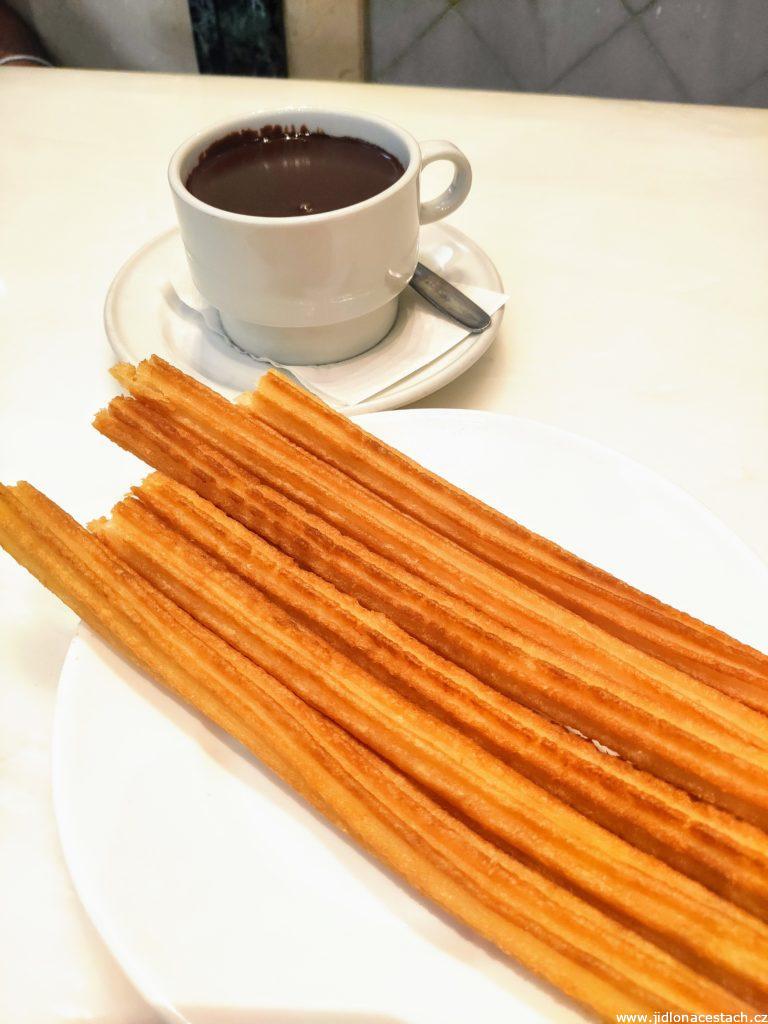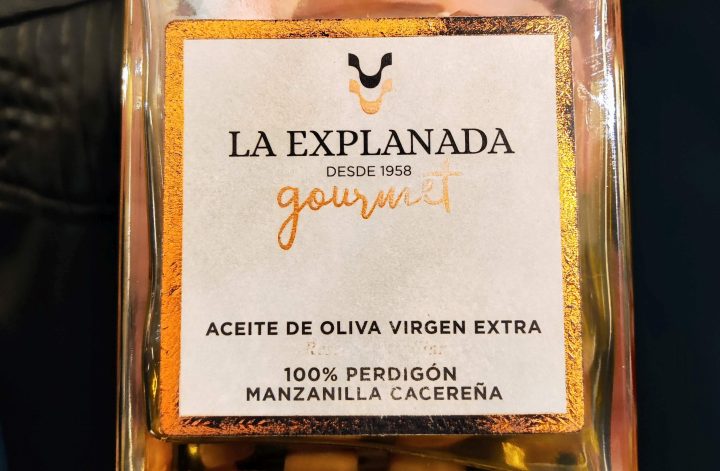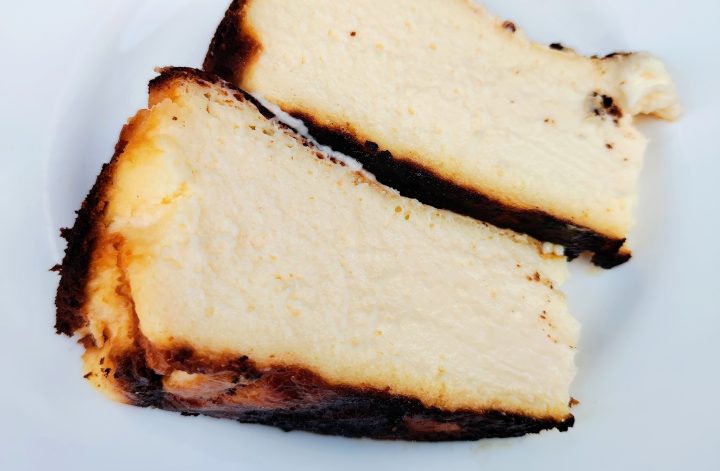The Spanish breakfast, traditionally light and simple, plays a significant role in the daily life of the Spanish people. Unlike the hearty breakfasts known in places like Britain, Spanish mornings typically begin with small, simple meals.
For me, as a lover of savory dishes, the best Spanish breakfast is pan con tomate y jamón (toasted bread with tomato and cured ham jamón). This simple combination of just a few ingredients complements each other perfectly on the plate. Among the sweet Spanish breakfasts, the famous churros (fried dough pieces often served with chocolate) deserve a special mention. It may be surprising to some that churros are a typical Spanish breakfast food, not a dessert.
What Do People Eat for Breakfast in Spain?
Pan con Tomate (Toasted Bread with Tomato)
Pan con tomate, also known as pa amb tomàquet in Catalan, is a simple yet extremely popular Spanish breakfast. The preparation of pan con tomate is very easy and quick. First, fresh bread is sliced (ideally a white country loaf with a crispy crust and soft interior). The slices of bread are lightly toasted or grilled, ripe tomatoes are peeled, then mashed with a fork or grated directly onto the toasted bread slices. The dish can be drizzled with a dash of quality Spanish olive oil. This already exquisite combination is elevated even further by the addition of Spanish cured ham, jamón.

Instead of the term pan, you may also come across the name tostada (toast), especially in more upscale establishments, where the mashed tomatoes might sometimes be labeled as tartar de tomate (tomato tartare). However, these are almost identical dishes. In some places, instead of toasted bread, they offer molette, a small, round, flat bread roll similar to a bun originating from the Spanish region of Andalusia. In Andalusia, you can also try a regional variant called manteca colorá (spiced lard). A sweet alternative to pan con tomate is tostada con marmelada (toasted bread with marmalade).

How much does pan y tomate cost? The price of this excellent Spanish breakfast varies depending on the establishment you visit. In October 2023, I paid 4 EUR for a mollette with tomato and ham, a coffee with milk, and a glass of freshly squeezed orange juice at a small bistro in the town of Haro. The tostada captured in the first image, with better jamón ibérico ham, cost 2.80 EUR at the famous tapas bar Café Iruña in the city of Bilbao. Café Iruña has a beautiful interior (and of course top-notch food) and is a great place for a more festive breakfast despite the slightly higher prices.
Tortilla de Patatas (Potato Omelette)
Tortilla de patatas, an omelette made from potatoes and eggs, is another extremely popular dish in Spanish cuisine. The Spanish consider tortilla de patatas a national dish. It is an omelette made from eggs, potatoes, and onions (though adding onions to this dish has both staunch supporters and opponents in Spain). Despite its simple preparation, the result is an excellent dish that the Spanish eat not only for breakfast.

The preparation of tortilla de patatas begins with peeling and slicing the potatoes into thin slices. These are then fried in olive oil until soft. In a bowl, the eggs are beaten. The cooked potatoes are added to the eggs, creating a compact mixture that is poured back into the pan. Once the bottom side is firm, the mixture is flipped with the help of a plate and fried again. The result is a thick, golden omelette with a tender and soft texture. Personally, I love it when the eggs in the center remain a bit runny. Tortilla de patatas can be served warm or cold, sliced into wedges or cubes. Tortilla de patatas can also be prepared with various fillings. Beyond breakfast, it is also eaten as a main dish, snack, or cut into smaller pieces as a tapa (pincho de tortilla).

How much does tortilla de patatas cost?
In October 2023, a classic tortilla de patatas in a small bistro in the town of Haro cost me 1.80 EUR. Variants with fillings are slightly more expensive.
Bocadillos (Sandwiches)
Bocadillos are traditional Spanish sandwiches that are an integral part of local gastronomy. These tasty sandwiches consist of a long white bread (“pan de barra” or “baguette”), which is cut lengthwise and filled with various ingredients. The selection of fillings for bocadillos is almost endless. Popular options include Spanish cured ham (“jamón”), cheese (“queso”), Spanish omelette (“tortilla de patatas”), tuna (“atún”), beef (“ternera”) or pork (“lomo”) meat, vegetables, and sauces such as tomato (“tomate”) or garlic mayonnaise (“aioli”).

Bocadillos are often served as breakfast, a snack, fast food, or a light lunch. They are also popular because they can be eaten on the go. Many bars, cafes, and street stalls across Spain offer a wide variety of bocadillos. The size of bocadillos can vary from small “mini” versions to large “bocadillos de medio metro” (half-meter sandwiches) that are shared among several people. I have always encountered these half-meter sandwiches at Spanish markets, where they often serve as an advertisement – a half-meter sandwich simply attracts attention.
At the same time as bocadillos, we must also mention a sandwich with a somewhat unusual name, “bikini.” The bikini sandwich is another popular Spanish (not just) breakfast dish. Despite its name, it has nothing to do with swimwear; the origin of the name is unclear, but one theory suggests that it was named after the Bikini bar in Barcelona, where it was invented. Bikini consists of two slices of white toast bread with ham and cheese in between. The sandwich is grilled or toasted until the bread is crispy and the cheese is melted. Some variations may include additional ingredients such as tomato, onion, or herbs. The bikini is often served cut into triangles. The bikini is essentially the Spanish version of the French Croque Monsieur.
Each Spanish region has its own version of the sandwich. In Madrid, try pulgas (pulgitas) for breakfast, while in Barcelona, order entrepan instead.
How much do bocadillos and bikini sandwiches cost?
The price of a freshly prepared small sandwich starts at 2-3 EUR and increases depending on the size of the sandwich and the type of filling.
Churros con Chocolate (Fried Pastry with Chocolate)
Churros are a traditional Spanish pastry that is popular throughout the country. Churros are long, thin, fried dough pieces that are crispy on the outside and soft on the inside. The dough for churros usually consists of flour, water, salt, and sometimes oil or butter. The dough is placed in a piping bag with a star-shaped nozzle and squeezed into hot oil, where it is fried until golden brown. Different shapes of churros are made using different nozzles to squeeze out the dough. They are traditionally served hot. After frying, the churros are coated in sugar and cinnamon, giving them a sweet and aromatic flavor, or they are accompanied by hot chocolate.

In Spain, churros are commonly available in “churrerías,” specialized establishments dedicated exclusively to the preparation and sale of churros. Churros are a typical breakfast food for Spaniards, even though they are available all day long. Churros are not a typical dessert. So if you come across a restaurant that lists this sweet treat among other Spanish desserts, it’s better to quickly walk away. In Madrid, you can try pairing the chocolate with Spanish solelitas biscuits, while in Barcelona, try melindros biscuits. Both go perfectly with chocolate.
How much do churros cost?
A cup of chocolate with six churros sticks costs 5.90 EUR at the famous San Ginés chocolaterie in Madrid (March 2024). San Ginés is one of the best places to try churros, having been in operation since 1894. Besides churros, you can also try porras here – a thicker and heartier version of churros.
Sweet Pastries for Breakfast
In Spain, it is quite common to go to a local bakery for something for breakfast, and the selection is incredibly wide!
Almond croissant (croissant de almendras) is a delicious variation of the classic French pastry that has gained popularity in Spain. This flaky croissant is topped with almond slices, adding an interesting crunch and a delicate nutty flavor. It is often served with hot coffee or tea and is the perfect way to start the day.
Napolitana is another popular Spanish sweet pastry, somewhat similar to the French pain au chocolat. It has the shape of a long rectangle and is made from dough that is richly filled with various flavors. The most common version of napolitana is the one with a chocolate filling.
Magdalenas are Spanish muffins, which are soft, fluffy, and delightfully buttery. They are often served for breakfast or as a snack. Magdalenas have a characteristic shape reminiscent of a seashell. Their simple taste makes them a classic of Spanish pastries. They are typically served with coffee.

Drinks for Breakfast
Spanish mornings typically start with a strong and aromatic coffee. This can be a quick standalone espresso or café con leche, which combines coffee with frothed milk. In many places, you can order freshly squeezed orange juice (“zumo de naranja”) for breakfast, usually served in a small glass (“zurito de zumo de naranja”). You will also often come across the Spanish chocolate drink Colacao. In some regions, it’s not uncommon to have a small beer (caña de cerveza) or a glass of wine with breakfast. I often encountered this habit among locals in Basque Country.

What Time do Spaniards Have Breakfast?
Spanish breakfast has a clear timing for Spaniards (less so for us). It is often consumed in two sittings:
- Desayuno (first breakfast): Desayuno is the first meal of the day, consisting of something small and a cup of coffee. Many Spaniards have this kind of breakfast at home before going to work or school. Desayuno is typically served between 7:00 and 9:00 a.m.
- Almuerzo (second breakfast or snack): Almuerzo is a meal eaten between the first breakfast and lunch, and it is more substantial than desayuno. Almuerzo is typically served between 10:00 and 11:00 a.m. In Spain, almuerzo is considered a separate meal. It is often the first meal eaten outside (not at home).
Popular tapas are not usually part of a Spanish breakfast.
What is your favorite food for a Spanish breakfast?


